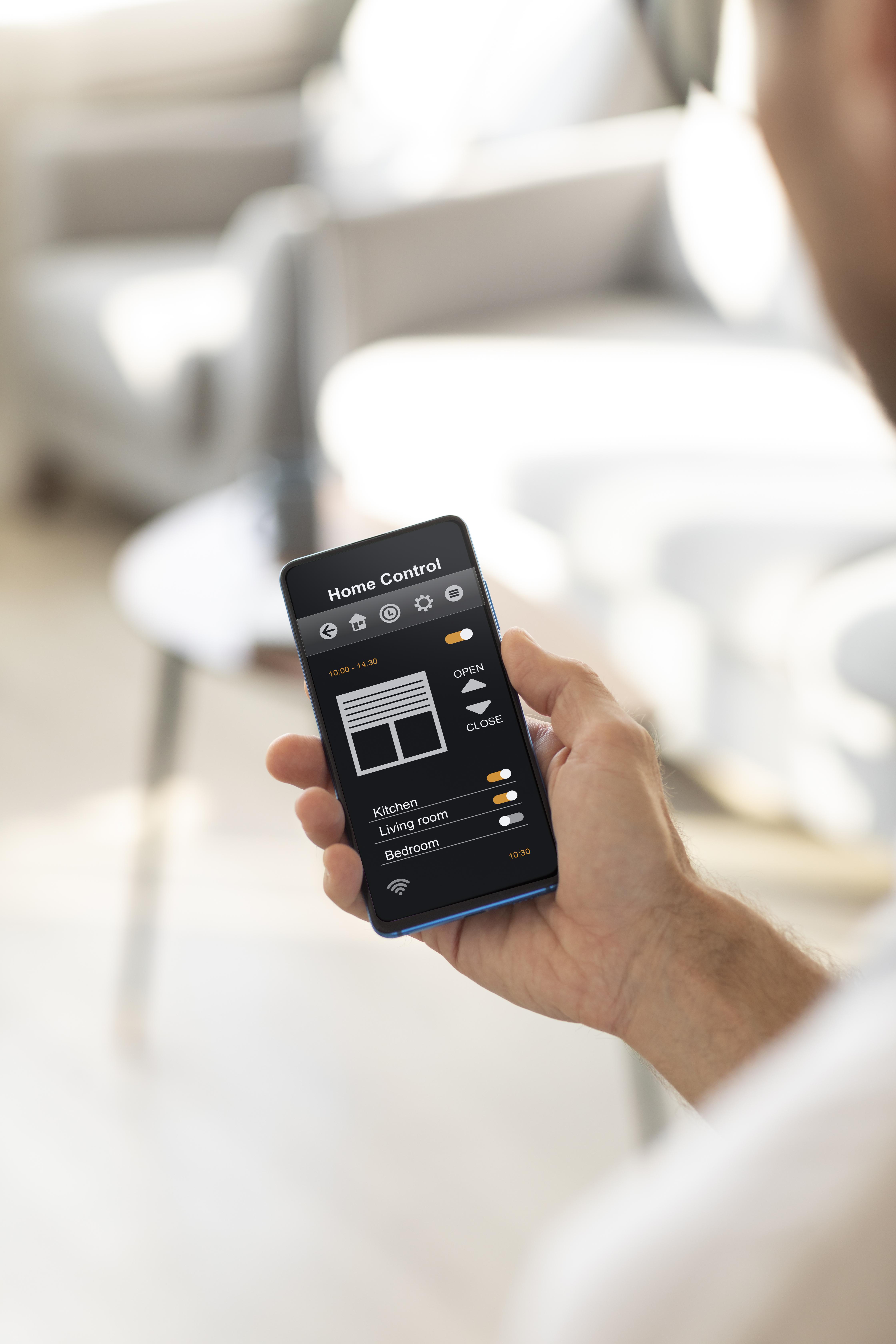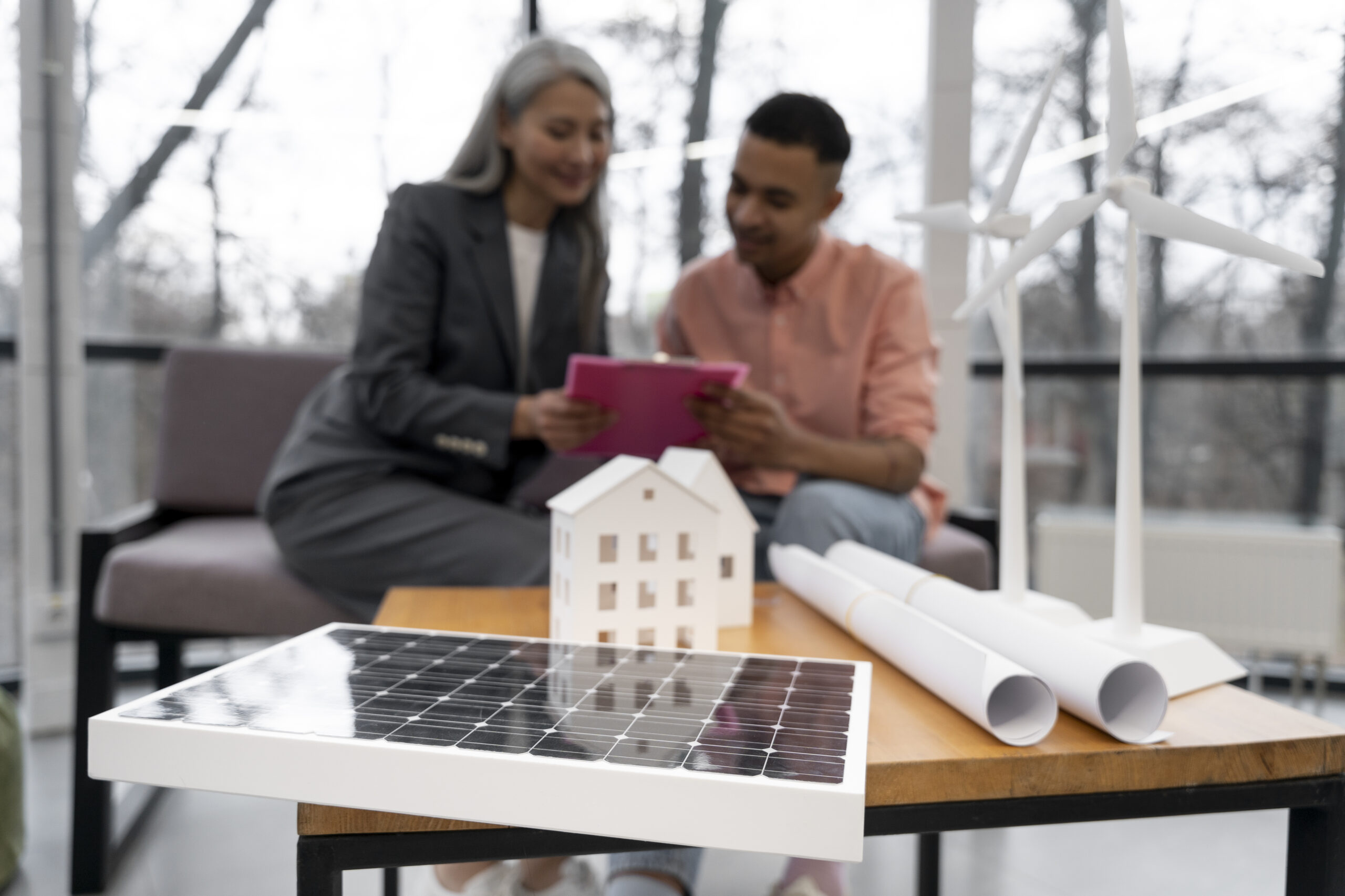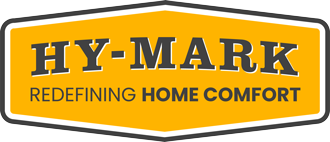As technology continues to advance at a rapid pace, the heating, ventilation, and air conditioning (HVAC) industry is not far behind in embracing innovation. These innovations are transforming the way we think about HVAC systems in 2023, making them more efficient, eco-friendly, and user-friendly. In the past, innovations like the first modern air conditioner, invented by Willis Haviland Carrier in 1902, changed our definition of home comfort. In this blog post, we explore the future of HVAC technology and the 11 key innovations that are shaping tomorrow’s comfort.
1. Smart Thermostats and Controls
Smart thermostats, such as Nest and Ecobee, are just the beginning. Future developments will focus on AI-driven thermostats

that learn your preferences, integrate with other smart home systems, and adapt to changing conditions for maximum energy efficiency. Smart thermostats are equipped with various sensors that will continuously collect data on the environment both inside and outside the building. The AI algorithms within the smart thermostat analyze historical data and real-time information to predict the heating or cooling needs of the building. Occupancy sensors can also detect when rooms are unoccupied and adjust the temperature accordingly. A strong start for our 11 HVAC innovations.
2. Variable Refrigerant Flow (VRF) Systems
VRF systems are becoming more popular, offering zoned heating and cooling, which saves energy and provides greater comfort. VRF systems can provide both heating and cooling simultaneously in different zones, thanks to their heat recovery capabilities. For example, excess heat from a cooling zone can be transferred to a zone that requires heating, improving overall energy efficiency. VRF systems use variable-speed compressors that can adjust their capacity based on the load requirements. This results in reduced energy consumption, as the system doesn’t continuously operate at full capacity. VRF systems often use inverter-driven compressors, which are more energy-efficient than traditional on/off compressors. Inverter technology allows for smooth modulation of capacity, reducing energy consumption. Unlike traditional forced-air HVAC systems that can experience energy losses due to ductwork, VRF systems have minimal ductwork and therefore fewer losses.
3. Solar-Powered HVAC
Solar panels are increasingly being integrated with HVAC systems, offering cleaner and more sustainable energy sources. These hybrid systems can reduce electricity costs and carbon emissions. Examples of solar-powered HVAC systems include solar air conditioners, solar water heaters, solar ventilation systems, hybrid solar HVAC systems, solar thermal HVAC systems, geothermal heat pumps with solar integration, solar-powered air source heat pumps, solar-powered mini-split systems, solar-powered evaporative coolers, and solar-powered radiant floor heating. Another widely-used and beloved of our 11 HVAC innovations.
4. Geothermal HVAC
Ground-source heat pumps are gaining ground, tapping into the Earth’s stable temperatures to provide efficient heating and cooling. Geothermal heating systems take advantage of the Earth’s relatively constant temperature a few feet below the surface. Typically, the ground temperature remains around 50 to 60 degrees Fahrenheit (10 to 16 degrees Celsius) year-round. In cold weather, these systems extract heat from the ground and transfer it to the building’s interior for space heating. In hot weather, they remove heat from the building and dissipate it into the ground for cooling. Geothermal systems are highly energy efficient. They can produce up to five times the energy they consume, making them one of the most efficient heating and cooling technologies available. Their efficiency results from the fact that they move heat rather than generate it. They require electricity only to operate the heat pump and circulate the heat through the building. Geothermal systems have a long lifespan, typically exceeding 20 years for the heat pump and 50 years for the ground loop. Their durability and reliability contribute to long-term energy savings.
5. Advanced Air Purification
Improved filtration and air purification systems are crucial, especially in the context of global health concerns. Look for UV-C sterilization, improved HEPA filters, and other technologies to enhance indoor air quality. Advanced air purification systems can help maintain the cleanliness of HVAC components, such as coils and filters. Cleaner components operate more efficiently, leading to energy savings. Some advanced air purification systems are equipped with sensors that monitor indoor air quality. They can adjust ventilation rates and air exchange as needed, avoiding excessive energy consumption while ensuring fresh air circulation. ERVs are often integrated into advanced air purification systems. These devices recover heat or coolness from the outgoing air and transfer it to the incoming fresh air. This process reduces the load on heating and cooling systems, thus saving energy. Advanced air purification systems with highly efficient filters can capture particles and pollutants with minimal pressure drop. This means the HVAC system’s fan doesn’t need to work as hard to maintain adequate airflow, reducing energy usage.
6. Heat Recovery Systems
Heat recovery systems are commonly used in HVAC applications to capture heat from exhaust air. In commercial and residential settings, these systems extract heat from the air that is being expelled from a building and transfer it to incoming fresh air or recirculated air. These systems capture and reuse waste heat, boosting energy efficiency. In the future, heat recovery technologies may become more commonplace, particularly in commercial applications. In HVAC systems, heat recovery ventilators (HRVs) and energy recovery ventilators (ERVs) help maintain indoor air quality while reducing the energy needed for heating or cooling. They pre-condition incoming fresh air, ensuring it is closer to the desired indoor temperature. By transferring heat from exhaust air to incoming air, heat recovery systems can reduce the load on heating and cooling equipment. This means that the HVAC system doesn’t have to work as hard to reach and maintain the desired indoor temperature, resulting in energy savings.
7. Cloud-Based HVAC Management
Another one of our 11 future HVAC innovations is cloud technology. Cloud technology enables remote monitoring and control of HVAC systems. This not only allows for quick responses to issues but also contributes to energy savings through better management. Cloud-based HVAC management allows facility managers and building owners to monitor and control HVAC systems remotely through web-based interfaces or mobile apps. This capability enables them to adjust settings and schedules in real-time to optimize energy use based on occupancy and environmental conditions. Advanced analytics and machine learning algorithms are often integrated into cloud-based systems. These algorithms can predict when HVAC equipment is likely to require maintenance or repair. By addressing issues proactively, system efficiency is maintained, and energy waste due to faulty equipment is minimized. Cloud-based platforms gather data from HVAC systems, sensors, and other sources. This data is analyzed to provide insights into energy consumption patterns and areas for improvement. Users can access detailed reports and use the information to make informed decisions about energy-saving strategies.
8. Automated Diagnostics and Predictive Maintenance
IoT and AI will play a significant role in predictive maintenance, helping HVAC systems identify issues before they become major problems, reducing downtime and repair costs. Automated diagnostic systems continuously monitor equipment and processes in real-time, collecting data on performance, temperatures, vibrations, and other relevant metrics. This constant monitoring allows for early detection of inefficiencies or abnormalities that can lead to energy waste. Advanced algorithms analyze the data collected and compare it to established performance baselines. When deviations or anomalies are detected, the system generates alerts, allowing maintenance teams to take corrective actions promptly. Addressing issues early can prevent energy waste and equipment damage. Automated diagnostic systems can identify faults and diagnose the root causes of equipment issues. Once the cause is determined, maintenance teams can focus on addressing the specific problem, avoiding unnecessary repairs that can consume energy and resources.

9. Energy-Efficient Building Design
HVAC technology is evolving alongside architecture, with a focus on more energy-efficient building designs, which consider factors like orientation, insulation, and efficient window placement. Effective insulation materials and techniques are used to minimize heat transfer through walls, roofs, and floors. Proper insulation helps maintain indoor temperatures, reducing the need for heating and cooling. Energy-efficient building design incorporates windows and doors with low-emissivity coatings, multiple panes, and insulated frames. These features minimize heat transfer and air leakage while allowing natural light into the building. Passive solar design harnesses the sun’s energy for heating and lighting. Features such as large south-facing windows, thermal mass, and shading devices are used to optimize solar gain during the winter and prevent overheating in the summer. Buildings are designed to take advantage of natural ventilation and cooling strategies, reducing the reliance on mechanical ventilation and air conditioning. Features like operable windows and ventilation chimneys help maintain comfortable indoor conditions.
10. R-32 Refrigerants
As refrigerant regulations change, R-32 is emerging as a more eco-friendly option that is gradually replacing traditional refrigerants. R-32 is known for its higher thermodynamic efficiency compared to other refrigerants. It has a lower global warming potential (GWP) than traditional refrigerants like R-410A, making it a more environmentally friendly choice. R-32 has excellent heat transfer properties, which means it can absorb and release heat more efficiently. This results in quicker cooling or heating, reducing the energy required for HVAC systems to reach the desired indoor temperature. The superior heat transfer characteristics of R-32 contribute to lower energy consumption. HVAC systems that use R-32 refrigerants can operate more efficiently, reducing electricity bills and overall energy use. R-32 has a lower required refrigerant charge compared to some other refrigerants, which can lead to a reduction in potential refrigerant leaks and emissions. This helps maintain system efficiency and environmental sustainability.
11. Fuel Cell Heating and Cooling
Fuel cells, powered by natural gas or hydrogen, offer a sustainable energy source for HVAC systems. They produce electricity while simultaneously heating or cooling your space. Fuel cell systems can operate in combined heat and power (CHP) mode, where they simultaneously produce electricity, heat, and sometimes cooling (tri-generation). This integrated approach maximizes energy utilization, as waste heat from electricity generation is captured and used for space heating or cooling. Fuel cells are highly efficient in converting fuel into electricity and heat. They can achieve overall efficiencies of up to 80% or more, making them significantly more energy-efficient than traditional grid electricity and conventional heating systems. Fuel cells generate electricity with minimal emissions, reducing the carbon footprint of electricity production. They produce electricity and heat with lower emissions of greenhouse gases compared to traditional fossil fuel-based power plants. Fuel cells can provide backup power during grid outages, ensuring continuity of critical services and reducing the need for backup generators, which are often less energy-efficient.
The Future of HVAC Innovations
The future of HVAC technology is promising, and these innovations are just a glimpse of what’s to come. They promise to make our indoor environments more comfortable, energy-efficient, and environmentally friendly.
At Hy-Mark Mechanical, we are committed to staying at the forefront of HVAC technology, ensuring that our customers benefit from these innovations as they shape the future of comfort. Whether you’re interested in smart thermostats, energy-efficient systems, or any of the other emerging technologies, we’re here to help you navigate the exciting world of HVAC innovation. If you’re ready to explore the possibilities and embrace the future of HVAC, don’t hesitate to get in touch with us.
